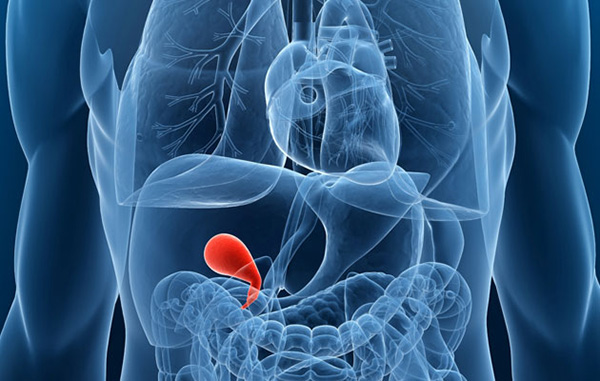Gallbladder (or “gall” traditionally) is a small organ, with saccular form which is found under the liver, with the purpose of storing the bile secreted by it. Bile, produced by the liver excretes helps to digest fats. Gallstones are composed of cholesterol and other constituents that are found in bile. Sizes can vary in size from millimeters to several centimeters.
What are gallstones?
Gallstones represent the presence of calculi (stones) inside the gallbladder and of the biliary ways (anatomical ducts that carry bile from the liver to the intestine).
Who is prone to gallstones:
Women are more prone to this condition, overweight people, people who have a family history with members suffering from gallstones, those who have high cholesterol or triglycerides, women undergoing estrogen therapy in postmenopausal and pregnant women.
Main causes are messy diet rich in fat, high calories, sedentary lifestyle, constipation, exhaustion.
What are the main symptoms?
– Pain is the main symptom and occurs in the epigastric region (stomach area) and in the right side of hypochondrium (right subcostal) and may radiate (it can spread) back and right shoulder. The pain can occur suddenly and does not relieve even if the patient attempts to get a comfortable position – it prevents deep breathing, can have postprandial (after eating) or nocturnal character and has a variable duration from tens of minutes to hours or days.
It can be intermittent pain, manifesting like periodic crises (biliary colic), or continuous pain, not easily relieved in case of complications.
- Nausea and vomiting from a bitter taste in the morning to vomiting food (green color), event that that relieves pain.
- Loss of appetite.
- Fever a sign of complications (acute cholecystitis).
- Jaundice, dark urine, pale stools sign of migration of calculi in main biliary route with bile duct obstruction.
The evolution of gallstones
There are forms without symptoms; those gallstones are discovered after an ultrasound routine check; and also forms with clear symptoms of right upper quadrant pain, vomiting, impaired general condition and complicated forms associated with fever and jaundice.
How diagnosis of gallstones, biliary colic or acute cholecystitis is made?
Gallstones, most commonly, is diagnosed by ultrasound tests. Biliary colic associates to cholelithiasis a characteristic symptomatology – in this case the ultrasound image is slightly modified from asymptomatic gallstones. Acute cholecystitis associates a more intense symptomatology than that of colic and may be associated fever. The ultrasound test shows thickened and inflamed walls of the gallbladder, and laboratory tests are changed (increased leukocytes).
Treatment
For pain, can be administered antispasmodic, analgesic, antiemetic (prevents vomiting) with a role in relieving symptoms. However, this medication, will not make “stones” to disappear. Patients, besides the obvious periods of pain, can develop infectious complications (acute cholecystitis, gangrene, perforation), mechanical (migration of the common bile duct with jaundice occurrence), etc.. Therefore, surgical treatment is indicated in the beginning, once the patient is known to have asymptomatic or symptomatic gallstones.
What surgical treatment options exist?
The surgery involves removal of the gallbladder (bile); of the reservoir where calculi is formed (stones). This operation can be done in two ways: laparoscopic or open way.
Laparoscopy has many advantages: the operation is performed by mini incisions of maximum 1 cm, under the control of a miniaturized video camera (laparoscope) inserted into the abdomen through one of the incisions and using long and slender forceps specially designed for laparoscopic surgery. Recovery from laparoscopy surgery is much faster (basically you can go home the next day), the scars are more aesthetic, pain and suffering are greatly reduced compared to classical surgery.
Classical surgery means making an incision in the right subcostal or median area, of 12-15 cm and should be reserved for cases that can not be really resolved laparoscopically. Though the surgery removes the same gallbladder, recovery is more difficult, and the postoperative pain is usually higher.

